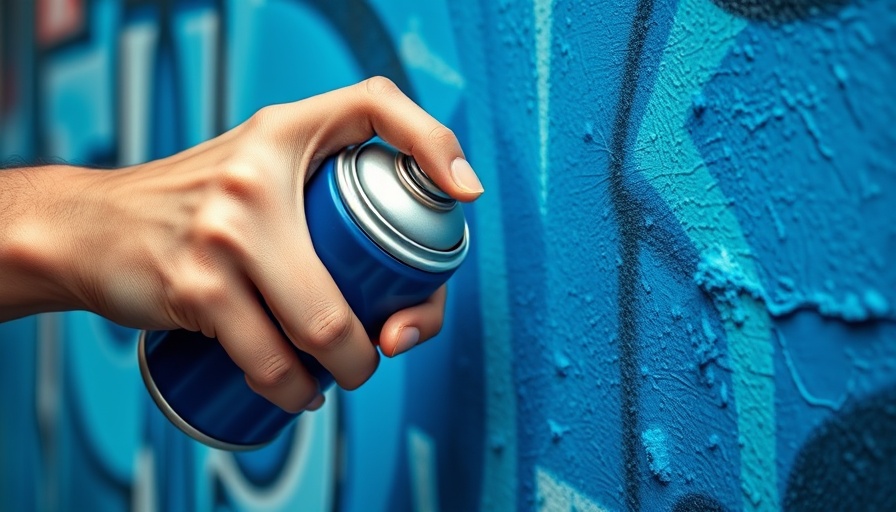
Becoming a Spray Painting Pro: Essential Tips to Know
Spray painting can be a transformative tool for DIY enthusiasts and homeowners alike, allowing for smooth finishes on anything from furniture to fixtures without the brush strokes. However, assuming that this task is as simple as pulling the trigger on a can can lead to frustration and unsatisfactory results. As homeowners in the MidSouth gear up for their DIY projects, embracing spray painting with caution and knowledge can make all the difference in achieving a pristine outcome.
Choosing the Right Paint for Your Project
When painting different materials, it’s crucial to select spray paints that are specifically formulated for the surface you're working with. For instance, conventional spray paints often don't adhere well to plastic. Instead, paint brands like Krylon Fusion for Plastic and Rust-Oleum 2x cater to this need by fusing with the plastic, ensuring durability and longevity. Selecting the right product eliminates the risk of peels or chips, ultimately saving time and resources.
The Art of Technique: Spraying with Precision
The technique behind spray painting is just as important as the materials used. To avoid the dreaded runs, which occur when paint collects on a surface, apply light coats. This means layering thinner applications and allowing sufficient drying time between each round of painting. Generally, vertical surfaces should be painted first, followed by horizontal areas to optimize drying intervals. This strategy minimizes the chances of requiring touch-ups later, which can be time-consuming and tedious.
Mastering the Proper Motion for Consistency
A common mistake among beginners is swinging the arm in an arc while spraying. This might feel natural, but it often results in uneven coverage. Instead, maintain a parallel movement to the surface, ensuring that each pass overlaps about fifty percent with the last. This method fosters an even coat and eliminates stripes that can detract from the overall quality of the finish.
The Importance of Safety and Health Considerations
Safety should always be paramount when diving into spray painting projects. The aerosol mist produced during the application can be harmful if inhaled. While it may be tempting to work outdoors, wind can disperse paint and create an inconsistent finish. Instead, consider working indoors with proper ventilation, ensuring doors and windows remain open. A high-quality organic vapor respirator is essential for protecting your lungs and nervous system from dangerous fumes.
The Best Tools for the Task
One of the best investments a spray painter can make is a trigger handle for spray cans. These ergonomic tools reduce finger fatigue during prolonged use and enhance control, allowing for smoother applications. With multiple projects often requiring several cans of paint, such tools can significantly improve the ease and comfort of the process.
Building a Personal Connection to Your Space
Ultimately, spray painting not only revitalizes physical spaces but can also enhance emotional well-being. As you engage in personal projects, consider how unique and vibrant colors reflect your personality and style. By incorporating thoughtful color schemes, you create a meaningful connection to your environment that promotes positivity and creativity in your home.
Conclusion: Your Creative Journey Awaits
By understanding the fundamentals of spray painting—from the right materials to safety precautions—you are equipped to take on various DIY projects with confidence and finesse. This knowledge encourages you to embrace your creativity and enhance your living spaces while prioritizing health and safety.
So gather your supplies, follow these essential tips, and let your creativity flow!
 Add Row
Add Row  Add
Add 



Write A Comment